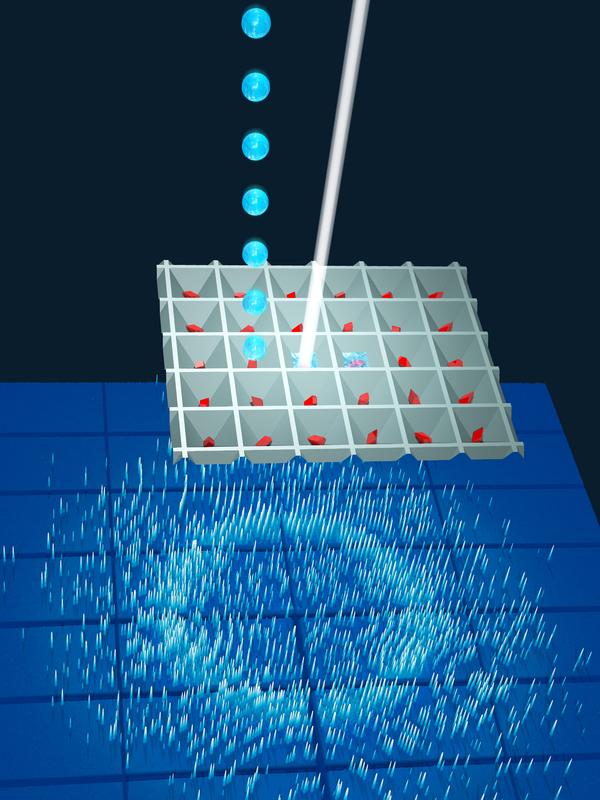Happy hour for time-resolved crystallography

The 'Liquid Application Method for time-resolved Analyses' (LAMA) opens the door for all diffusion amenable protein crystal systems Jörg Harms / MPSD
The functions of biomolecules are determined by their motions and structural changes. Yet it is a formidable challenge to understand these dynamic motions.
One method that illuminates them is time-resolved X-ray crystallography, where the reaction of a biological molecule is triggered and then snapshots are taken as it reacts.
However, triggering these reactions is extremely challenging as it usually involves lasers and protein reactions that can be started by light.
The new “Liquid Application Method for time-resolved Analyses (LAMA)” overcomes the need for optical triggers. It is tailored to the study of biologically relevant reaction time-scales, which are on the order of milliseconds (10-3) to seconds or even minutes.
These time-scales are of particular interest to biologists and pharmaceutical researchers as they often reveal the structural changes relevant to a particular biological function or the turnover of a drug.
The highly intense micro-focused X-ray beams available on EMBL beamline P14-2 allowed the interrogation of the system on a millisecond time-scale. Importantly, the new “LAMA” method makes the whole experiment a lot simpler than previous approaches.
To start a reaction, a few picoliters (10-12 liter) of the reactant are mixed with microcrystals of the target protein. Reaction snapshots are then recorded as the enzyme proceeds with the turnover of the reactant.
Excitingly, this new method has great potential on existing and up-coming high-brilliance synchrotron radiation sources, allowing many more researchers to carry out time-resolved crystallography studies.
The “LAMA” method has already been implemented as a generally accessible option at the new time-resolved macromolecular crystallography end station on the EMBL beamline P14-2 at the PETRA III synchrotron at DESY.
Many more important insights into biochemical processes will come about by applying such cutting-edge technologies. Their use will allow us to answer some of the most pressing questions on key health or environmental issues.
Dr. Pedram Mehrabi, pedram.mehrabi@mpsd.mpg.de
Prof. Dr. R.J. Dwayne Miller, dwayne.miller@mpsd.mpg.de
Media Contact
All latest news from the category: Life Sciences and Chemistry
Articles and reports from the Life Sciences and chemistry area deal with applied and basic research into modern biology, chemistry and human medicine.
Valuable information can be found on a range of life sciences fields including bacteriology, biochemistry, bionics, bioinformatics, biophysics, biotechnology, genetics, geobotany, human biology, marine biology, microbiology, molecular biology, cellular biology, zoology, bioinorganic chemistry, microchemistry and environmental chemistry.
Newest articles

First-of-its-kind study uses remote sensing to monitor plastic debris in rivers and lakes
Remote sensing creates a cost-effective solution to monitoring plastic pollution. A first-of-its-kind study from researchers at the University of Minnesota Twin Cities shows how remote sensing can help monitor and…

Laser-based artificial neuron mimics nerve cell functions at lightning speed
With a processing speed a billion times faster than nature, chip-based laser neuron could help advance AI tasks such as pattern recognition and sequence prediction. Researchers have developed a laser-based…

Optimising the processing of plastic waste
Just one look in the yellow bin reveals a colourful jumble of different types of plastic. However, the purer and more uniform plastic waste is, the easier it is to…



